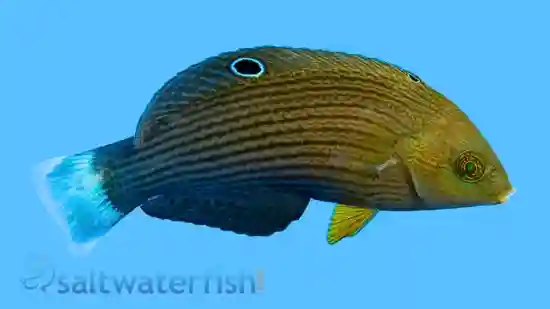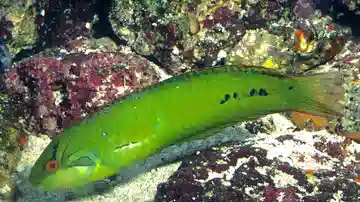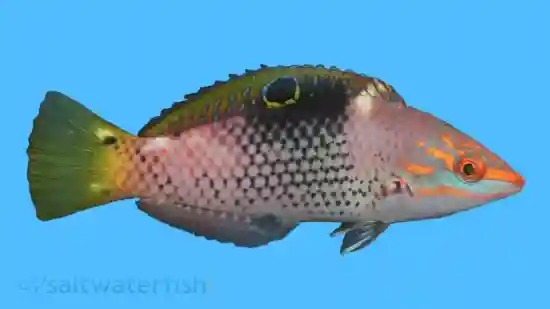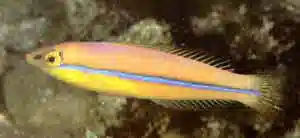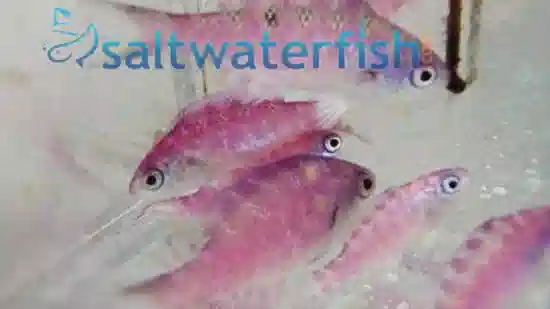Creole Wrasse
Clepticus parrae
(0 Reviews)
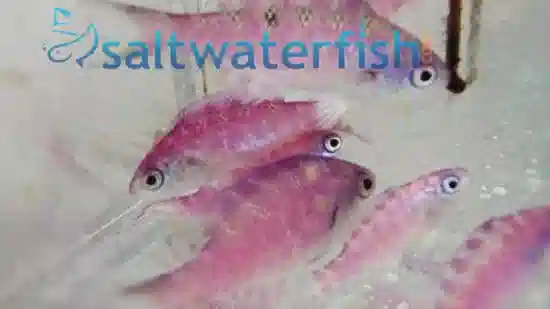
Creole Wrasse
Clepticus parrae
(0 Reviews)
{{ item.name }}
Size: {{ item.extra_field_3 }}
${{ getFormattedPrice(item.saleprice) }} ${{ getFormattedPrice(item.price) }}
To join the waiting list, click here
Free Shipping
With
$199.00
or more in Marine Life.
More details...
Creole Wrasse Care Facts
| Care Level: | Moderate |
|---|---|
| Temperament: | Peaceful |
| Diet: | Carnivore |
| Reef Safe: | With Caution |
| Minimum Tank Size: | 120 Gallons |
| Max Size: | 12 inches |
The Creole Wrasse, Clepticus parrae, is a colorful wrasse native to the Atlantic Ocean. They often experience substantial changes in color throughout their lifetime from a violet juvenile to a multi-hued adult with a deep yellow sheen on the rear of its body. The Creole Wrasse is very active during the day, requiring crevices and nooks to hide, The Creole Wrasse, like other wrasses, are hermaphroditic, meaning the largest is a male with most others being female. If that male dies, then the next largest female will morph into a male and assume the position as the leader.
Creole Wrasse (Clepticus parrae): A Comprehensive Guide
The Creole Wrasse (Clepticus parrae) is a fascinating addition to any saltwater marine aquarium due to its vibrant colors, active behavior, and relatively easy care requirements. Here's a detailed guide covering various aspects of keeping this species in a home aquarium:
Habitat
Creole Wrasses are found in the Western Atlantic Ocean, typically inhabiting coral reefs and deep rocky areas with plenty of hiding spots. They are commonly found in the waters around Florida, the Caribbean, and the Gulf of Mexico.
Reef Compatibility
Creole Wrasses are not considered reef-safe as they can harm invertebrates. They may consume small crustaceans and snails, so caution should be exercised when keeping them in a reef tank with such inhabitants.
Size and Lifespan
These wrasses can reach up to 12 inches long when fully grown. They can live for about 5 to 7 years in captivity with proper care.
Diet in Captivity
Creole Wrasses are carnivores and should be fed a varied diet of high-quality frozen or live foods such as brine shrimp, mysis shrimp, chopped seafood, and small crustaceans. They may also accept high-quality flake or pellet foods formulated for carnivorous marine fish.
Aquaculture and Availability
Creole Wrasses are less commonly aquacultured than other marine fish species, but they are occasionally available to hobbyists through reputable saltwater fish suppliers like Saltwaterfish.com.
Compatibility with Other Fish and Invertebrates
Creole Wrasses are generally peaceful towards other fish and can be kept with various tank mates, including other wrasses, peaceful tangs, angelfish, and most community reef fish. However, aggressive or territorial fish should be avoided as tank mates.
Sexual Dimorphism
Not much distinct visual differences exist between male and female Creole Wrasses until males reaching breeding size, once they are in season males will develop much more intense colors then females with strong contrast.
Juvenile to Adult Coloration Changes
Juvenile Creole Wrasses typically exhibit duller lavender coloration than adults. Their colors become more vibrant as they mature, with males having more blue-green bodies and distinctive yellow back end during breeding season.
Temperament
Creole Wrasses are active and peaceful fish that spend much of their time swimming in open water or exploring the nooks and crannies of the aquarium. They are not typically aggressive towards other tank mates but may become territorial if kept in small or overcrowded tanks.
Tank Requirements
A minimum aquarium size of 120 gallons is recommended for keeping Creole Wrasses. Provide plenty of live rock or artificial structures to create hiding spots and territories. The aquarium should have a secure lid as these fish are known to jump.
Water Conditions
- pH: 8.1 - 8.4
- Salinity: 1.020 - 1.025
- Water Temperature: 68°F - 75°F
- Water Flow: Moderate to high flow is preferred to mimic their natural habitat.
Other Common Names
Yellow cheek Wrasse
Five Compatible Tank Mates
- Emperor Angelfish (Pomacanthus imperator)
- Royal Gramma (Gramma loreto)
- Blue Tang (Paracanthurus hepatus)
- Naso Tang (Naso lituratus)
- Clown Triggerfish (Balistoides conspicillum)
Why Buy the Creole Wrasse from Saltwaterfish.com
Saltwaterfish.com provides healthy and sustainably sourced marine fish. By purchasing from them, you can be assured of receiving a quality specimen backed by their guarantee policy. Additionally, they often have a wide selection of marine fish, including less common species like the Creole Wrasse, making them a convenient choice for hobbyists looking to add diversity to their aquariums.
Currently Creole Wrasse does not have any reviews.


